Grab Bag #33
Woody's 100th San Francisco Story heads to Eureka Valley.
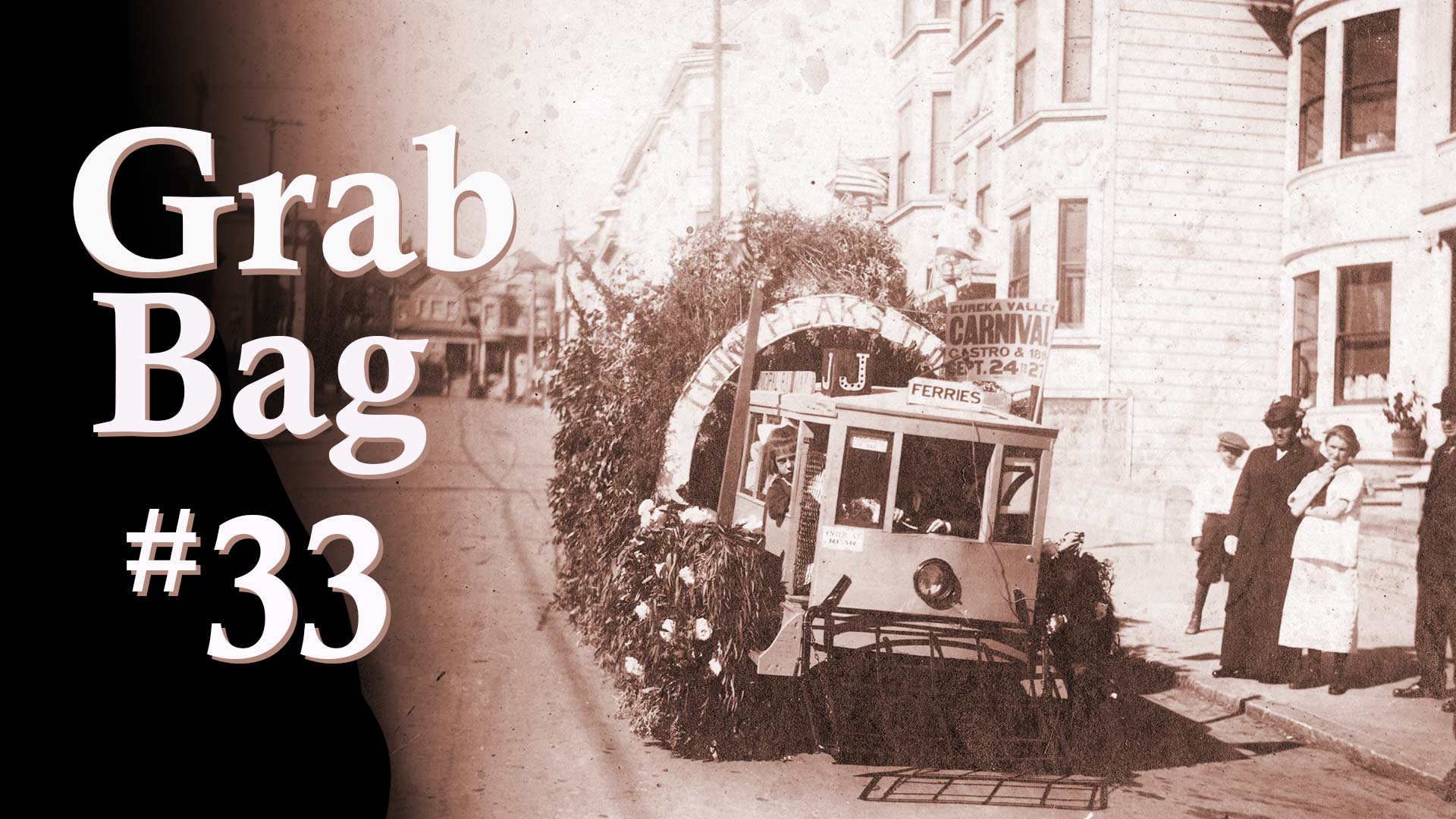
For the 100th (!) San Francisco Story, we’re going to do some business in the Castro, but time-travel back to when everyone called it Eureka Valley.
(The Grab Bag email is usually only for Friends of Woody, but since it is #100, let’s all take the ride together.)
Here is the valley in its days as the outskirts of the city, when streets petered out as dirt paths winding up hills:
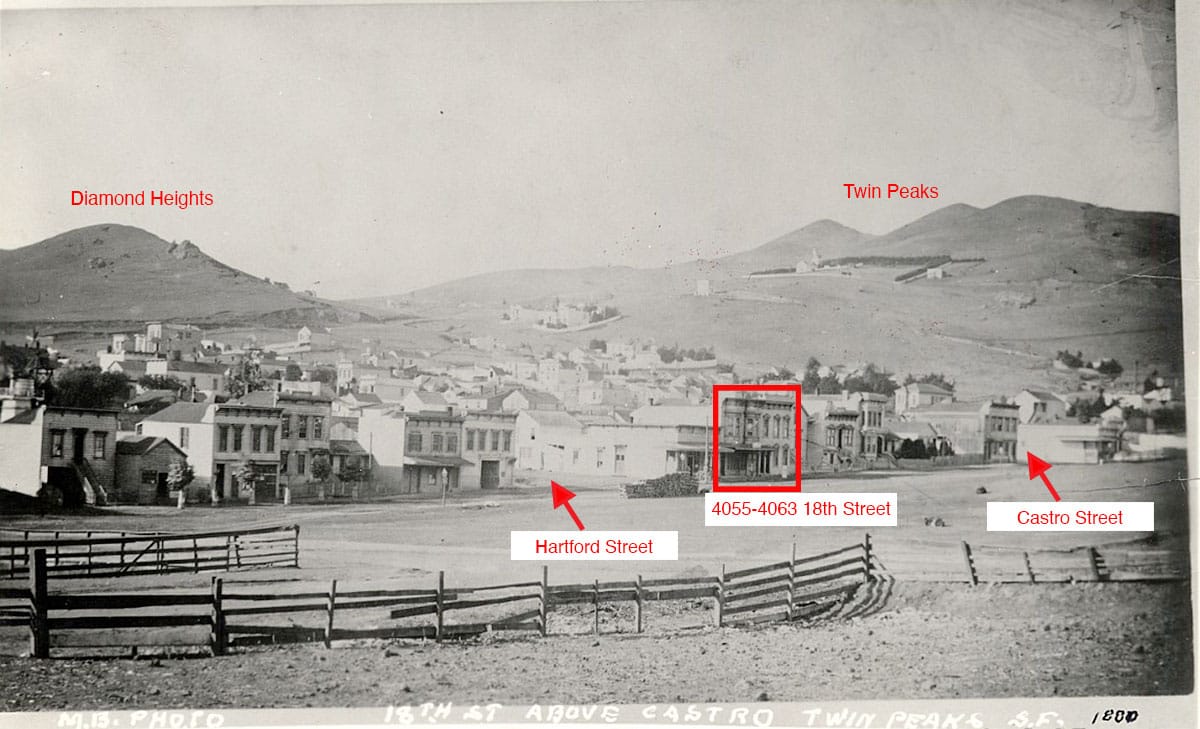
Institutions and individuals have made guesses for the date of the above image ranging from 1870 to 1890. Based on the architectural styles, I’d say the felt-penned “1880” in the lower right corner isn’t far off.
You can Google-streetview what 4055 and 4063 18th Street look like today, but you won’t be happy.
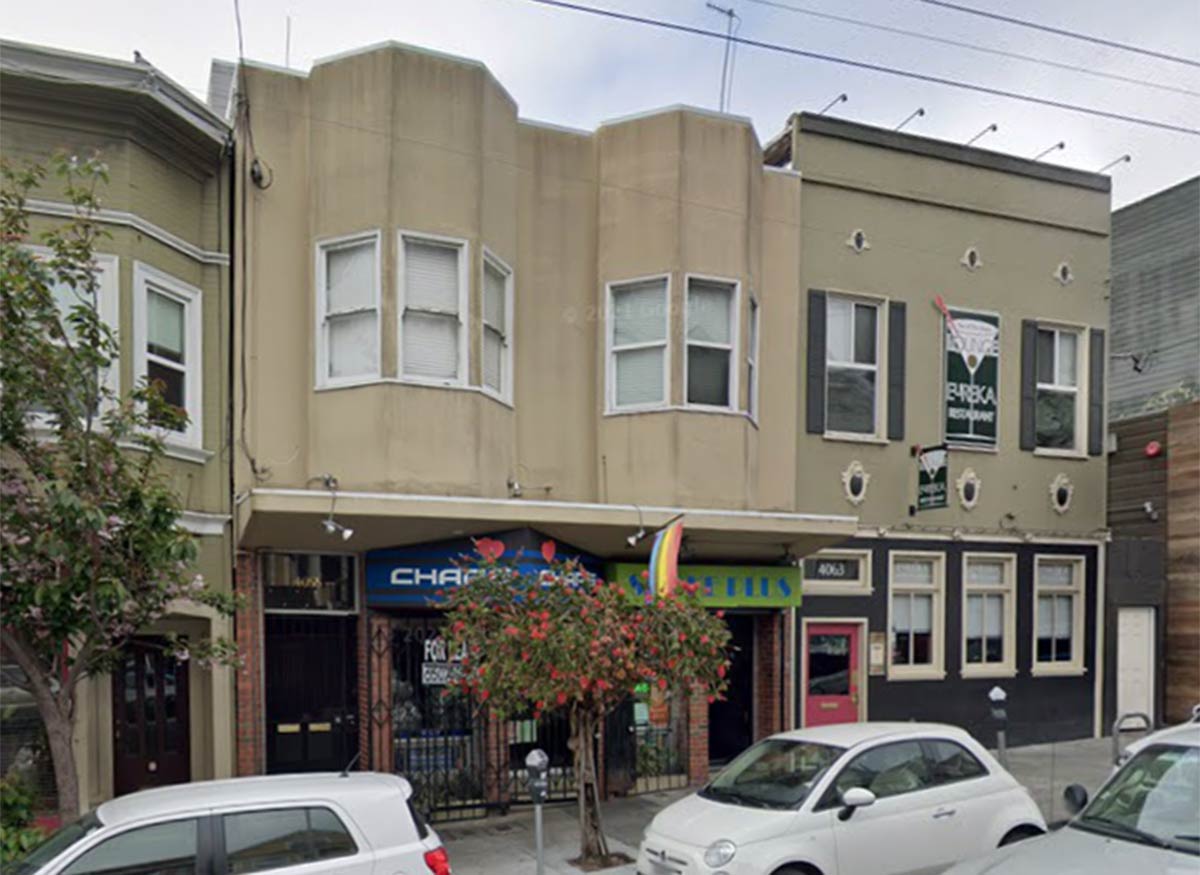
Early Eureka Valley was scattered homesteads, unpaved streets, corrals, and cattle pens. There were brickworks, quarries, as well as two soap factories on Diamond Street. The city really started filling in the blanks of the neighborhood with new and extended streetcar and water lines in the late 1880s and early 1890s.
Mostly spared by the 1906 earthquake and fire, Eureka Valley built up quickly in the first decade of the 20th century, at least in the lower foothills, and in 1910 found itself the chosen gateway for the city’s western expansion.
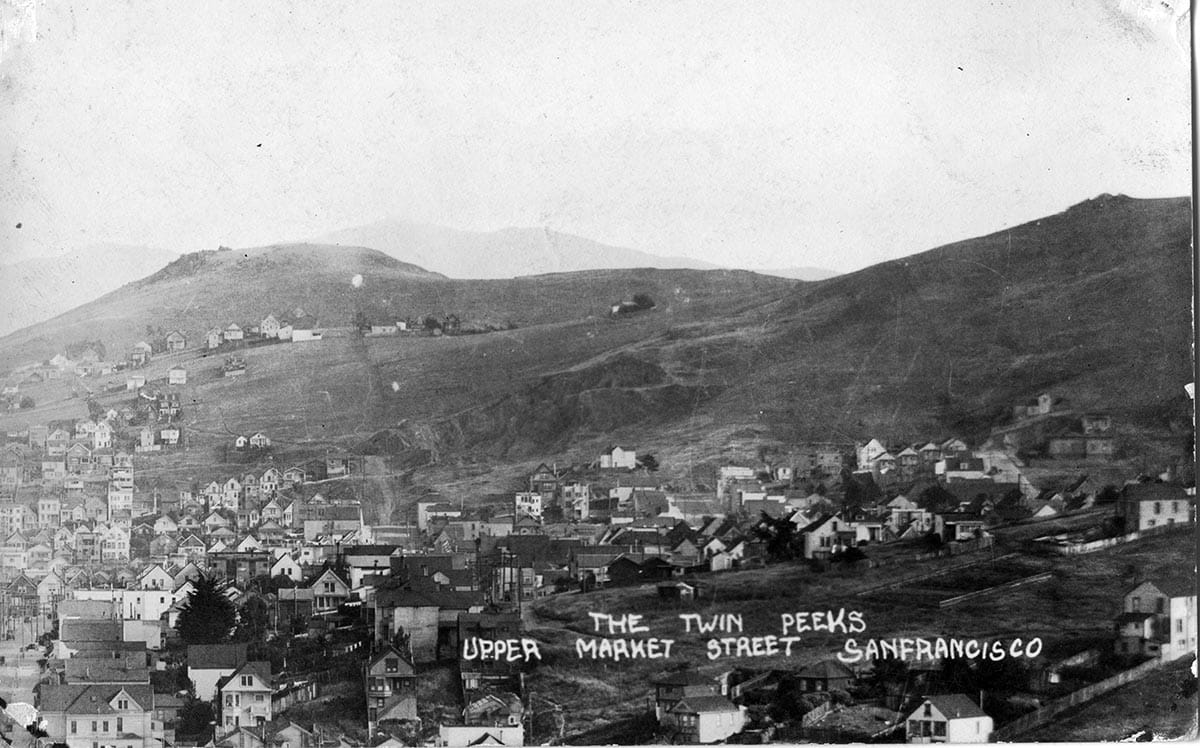
An ambitious 2.27-mile streetcar tunnel under Twin Peaks was planned with its eastern portal on Eureka Valley’s doorstep at Diamond and Market streets. As work commenced in 1914, the Eureka Valley Improvement Association decided to host a four-day carnival in the tunnel’s honor.
There was an elected carnival queen (Tillie Muller of 526 Castro Street won with an astounding 564,280 votes), a cutest baby contest, dances, races, and Mardi Gras-like parades.
In an article headlined “Eureka Valley in Gay Dress for Big Fete,” the Bulletin made the fiesta’s “genial hilarity in the streets” sound more exciting than it probably was (and a bit more like today’s Pride celebrations):
On throughout the week the gay festival will continue with special events on each day’s program and the fair queen the center of attraction in each of the joyous features, until on Sunday evening she discards her royal garbs and declares the revelry over.
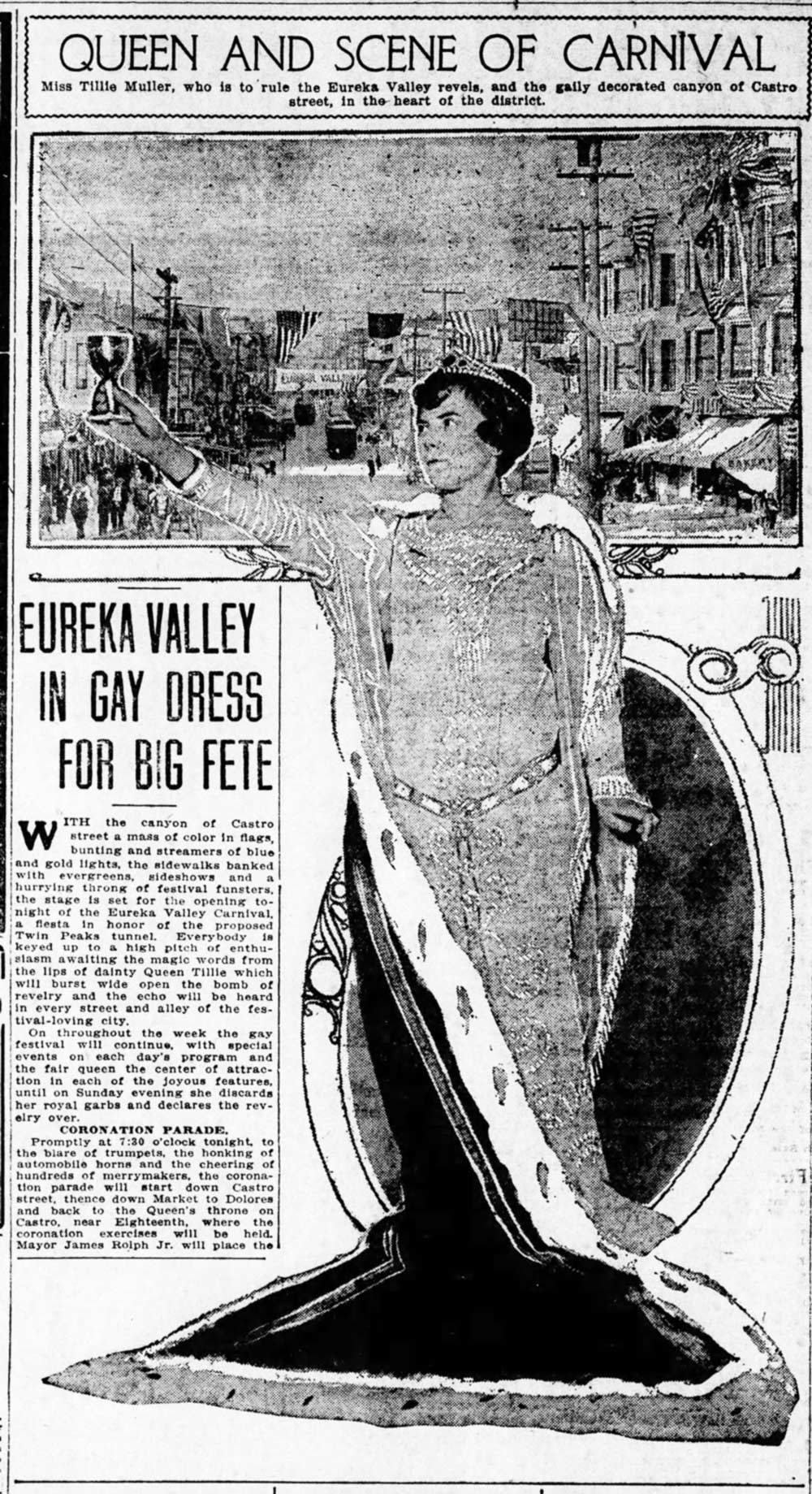
Wenzel Stiller, who lived at 4167 20th Street, just off Castro Street, made a Muni streetcar float, complete with a floral tunnel, to compete in the carnival’s “best decorated machine” contest:
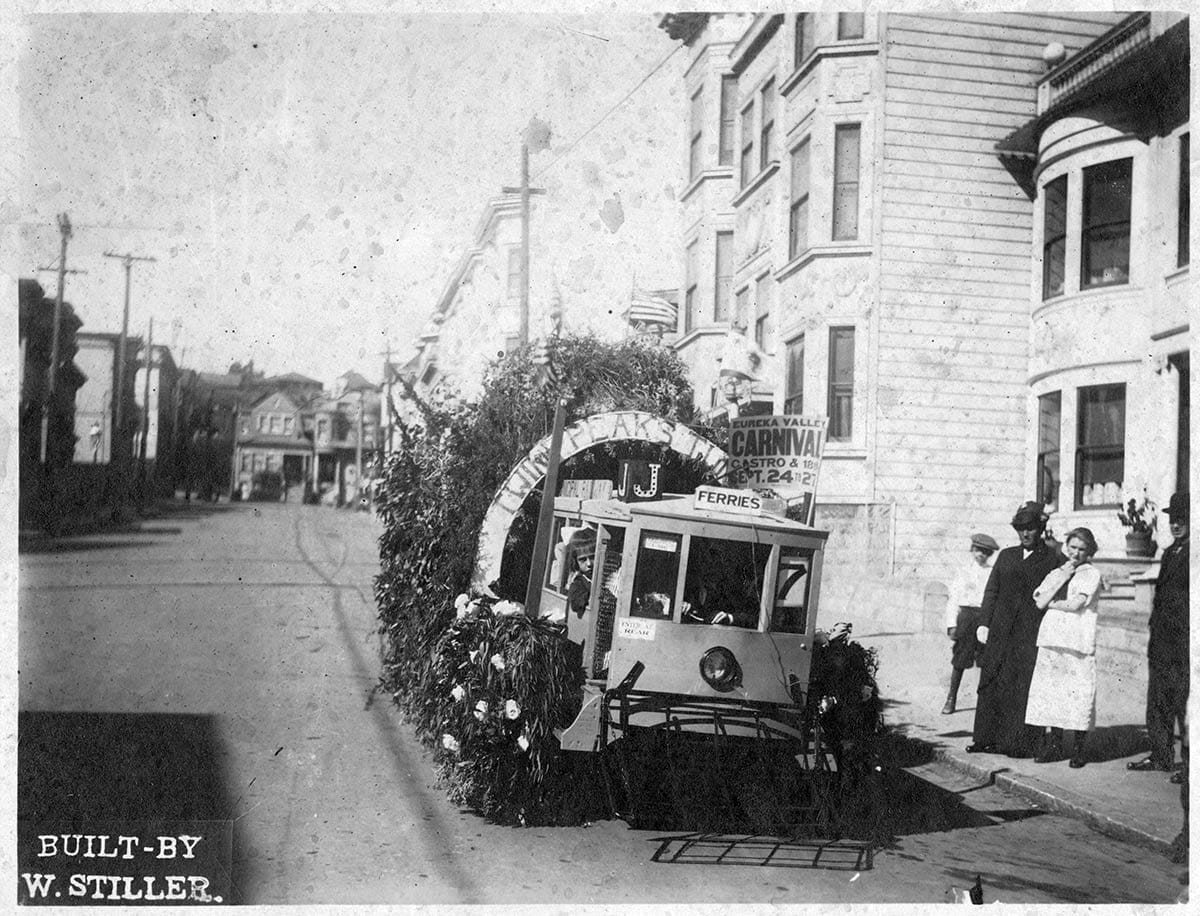
Stiller ran his late uncle’s business, the Akard Door Opener Company, which sold Dolvan B. Akard’s patented mechanical system to open and close residential front doors from the tops of staircases. Many, many San Francisco buildings still have these steampunk metal levers affixed to their walls, although my guess is far fewer of them work from the days when I was a kid.
The man who took the photo of Stiller’s float, Dietrich H. Wulzen, Jr., ran a pharmacy at the southwest corner of Market and Castro Streets, about where the famous rainbow flag now flies. The pharmacy was in a very awesome building before moving down a block to 18th and Castro:
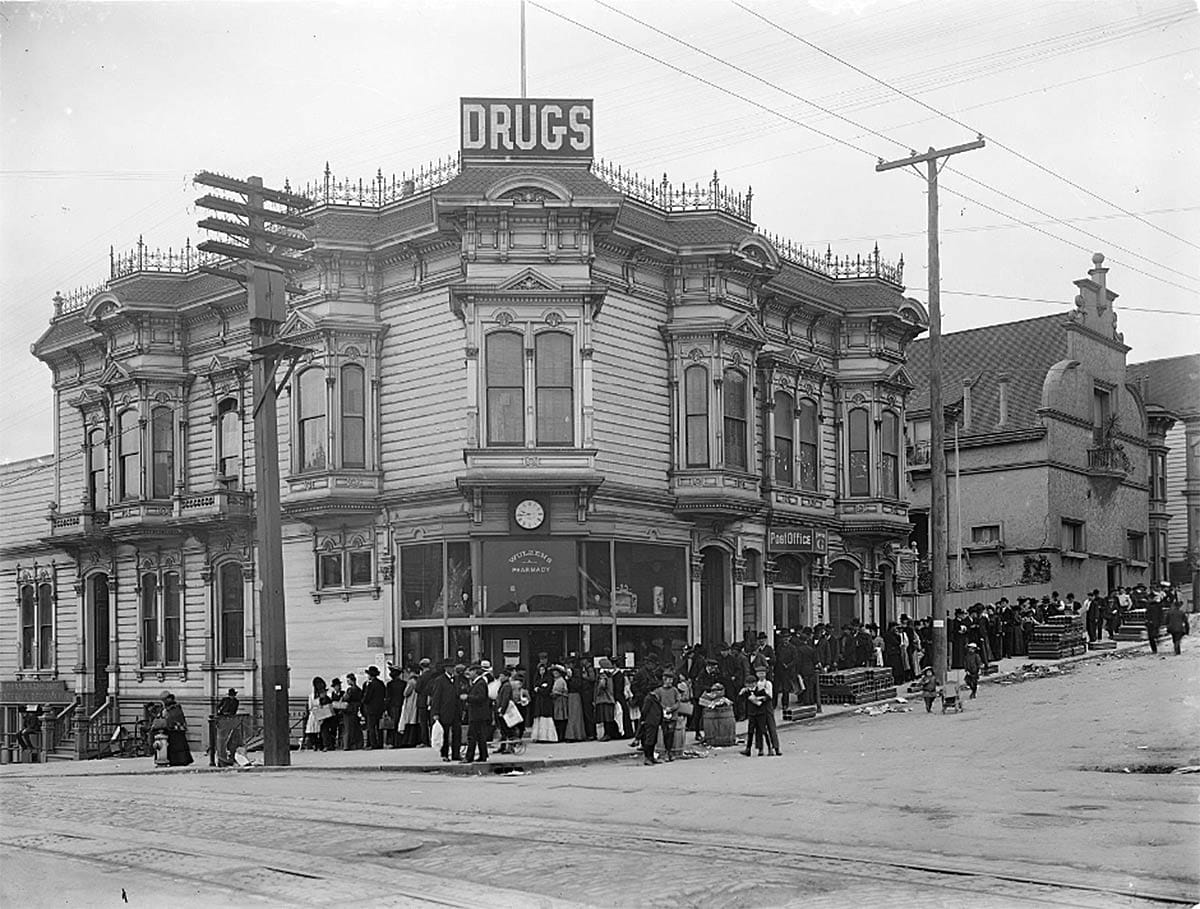
You can browse some of Wulzen’s crystal-clear glass plate negatives on the San Francisco Public Library site, including the 1900 country road shot below. Twenty years later, this would be a paved Upper Market Street and by the late 1950s, a widened expressway. (Read more about that house at center-left.)
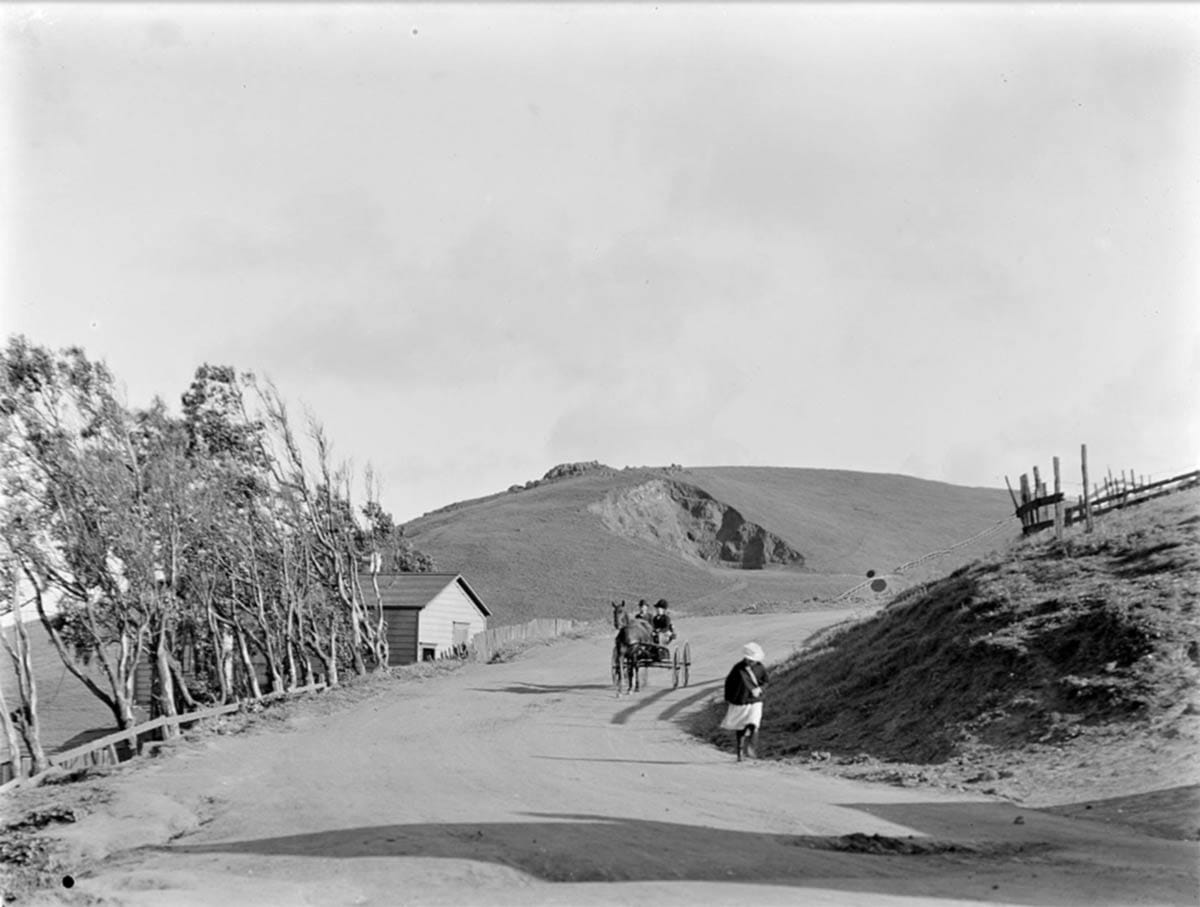
Wulzen was described as an “old-time resident” in 1895, but he might not have beat Charles Duveneck, who supposedly had the first grocery and bar in the area (around as far back as 1886).
Below, Duveneck’s old drinking emporium is shown in its last, deserted days on the southeast corner of 17th Street and Eureka Streets in 1928:
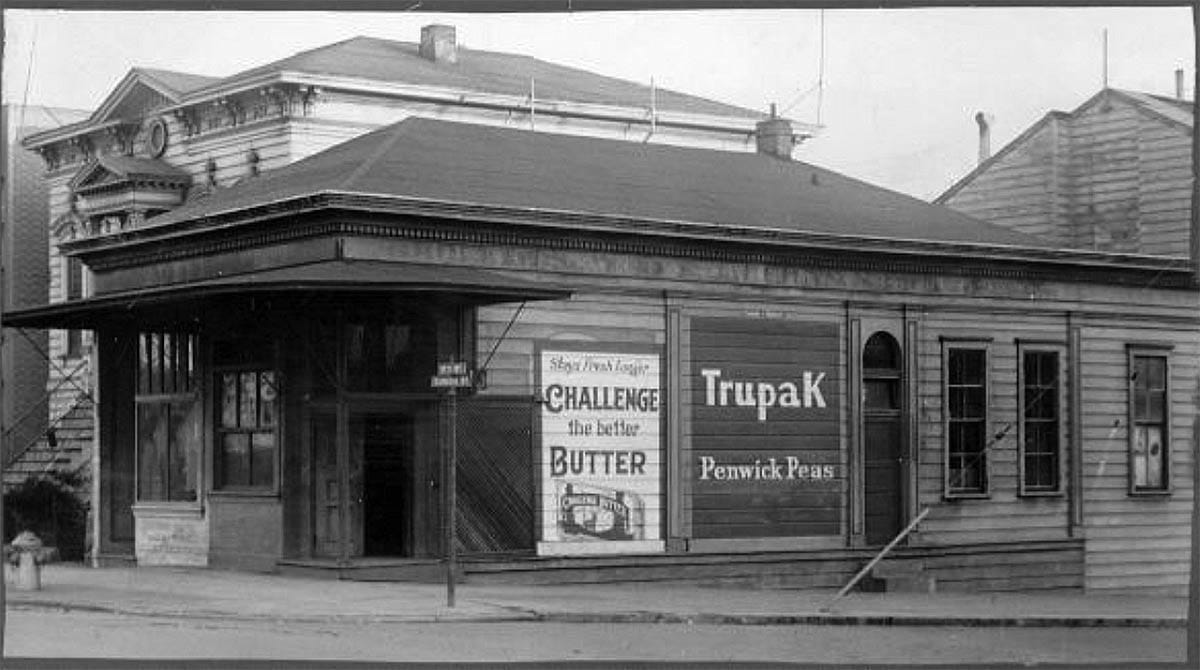
Speaking of groceries… How long do you think one has been able to buy a quart of milk at the southwest corner of 18th and Collingwood Streets?
Try 130 years.
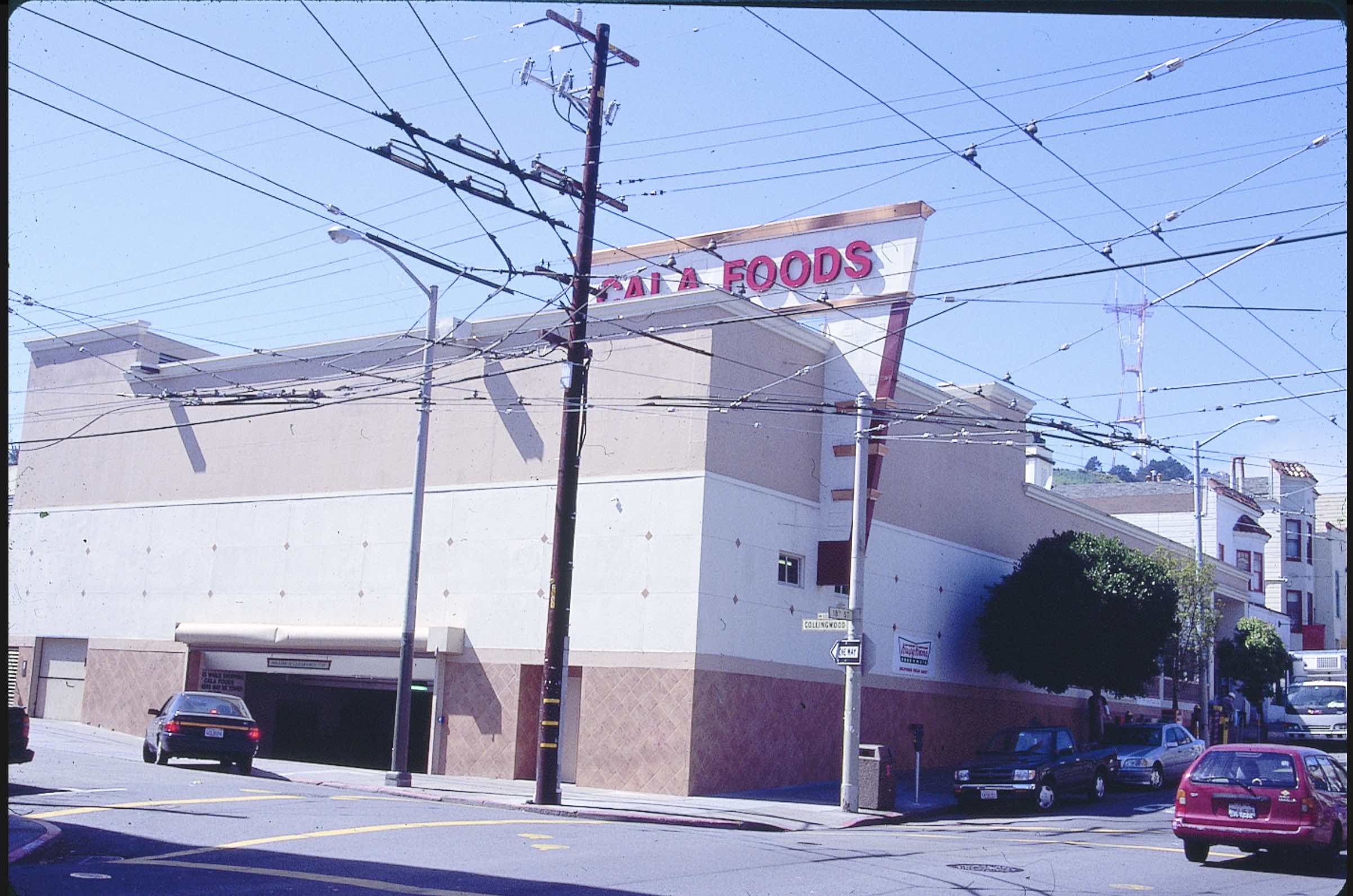
Today that corner has Mollie Stone’s, the latest in a line of markets dating back to the 19th century. Here are the Heinecke Brothers, Charles W. and Max, and friends posing in front of their market in the same location in 1909:
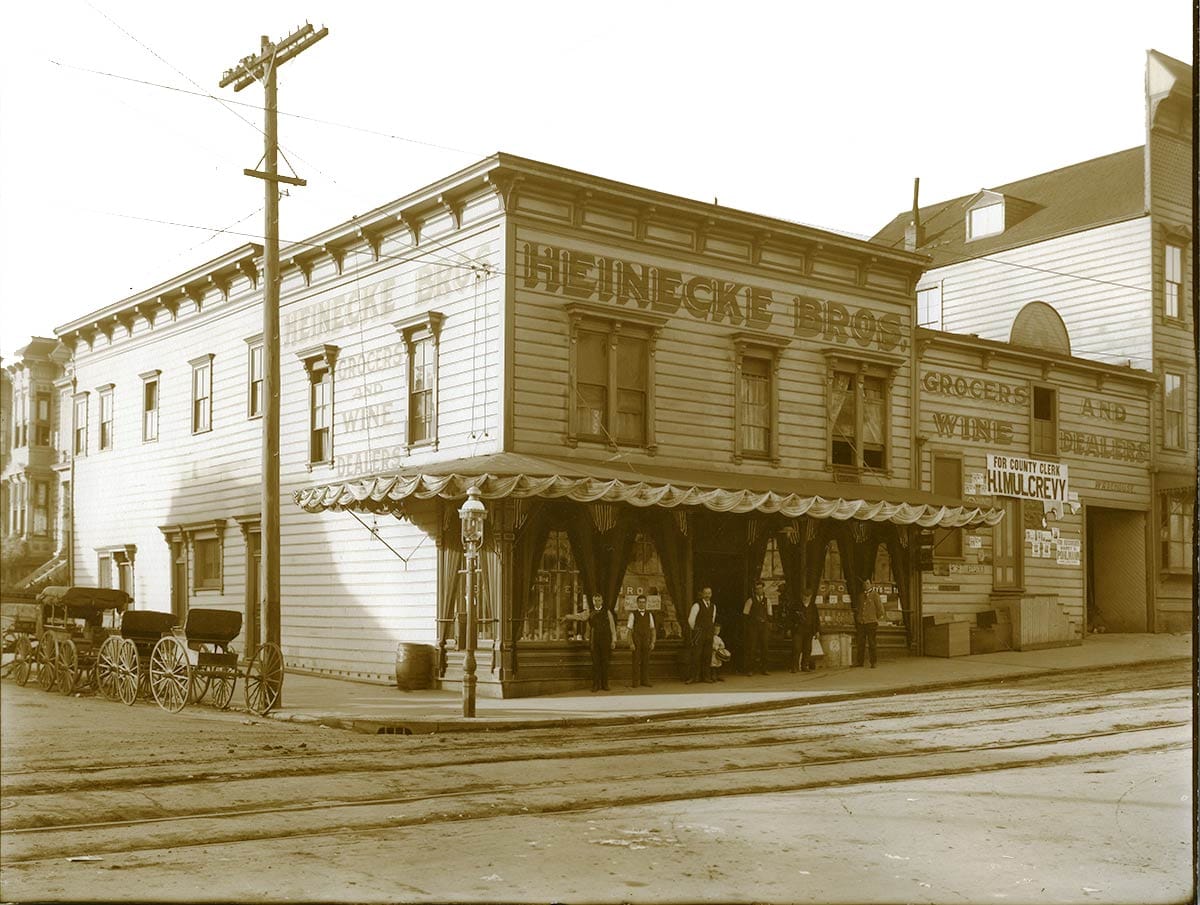
The Heineckes set up shop at 4201 18th Street around 1895 (when their grocery first showed up in the San Francisco directory). They both lived up the hill at 38 Caselli Avenue before Charles moved into 106 Collingwood Street at the back of the store. Max relocated just a couple of blocks away to 244 Diamond Street.
(Max’s daughter, Geraldine, finished third in the 1914 Eureka Valley carnival queen vote.)
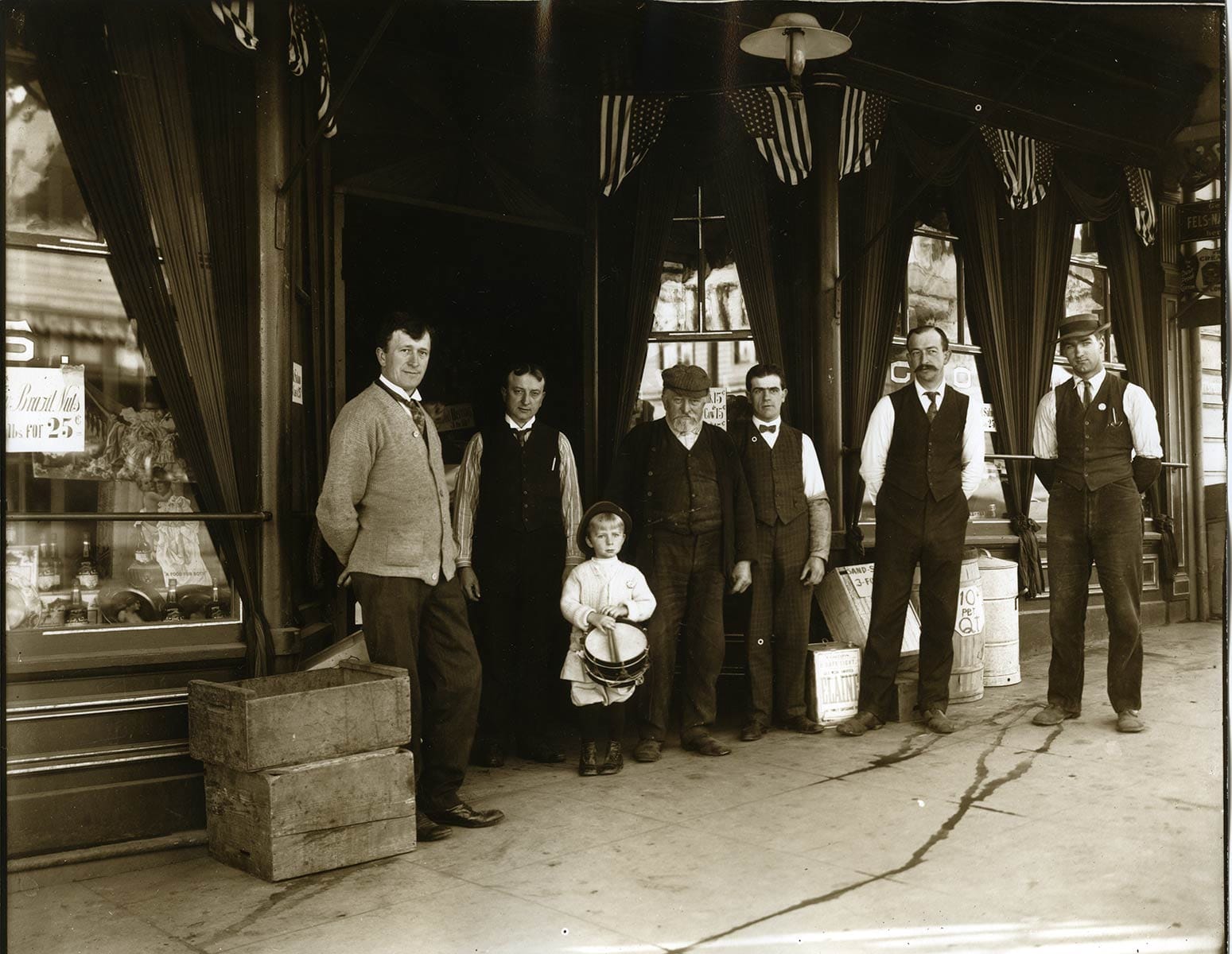
Charles was the sole owner beginning in 1917, but kept the “brothers” name for the business. After he died in 1948, Littleman Stores took over, building a modern supermarket on the site in 1954. It later became a Cala Foods before it was Mollie Stone’s.
Cousins in my family shopped at all versions of the 18th and Collingwood market, living just a half-block up 18th Street at 4251 18th Street.
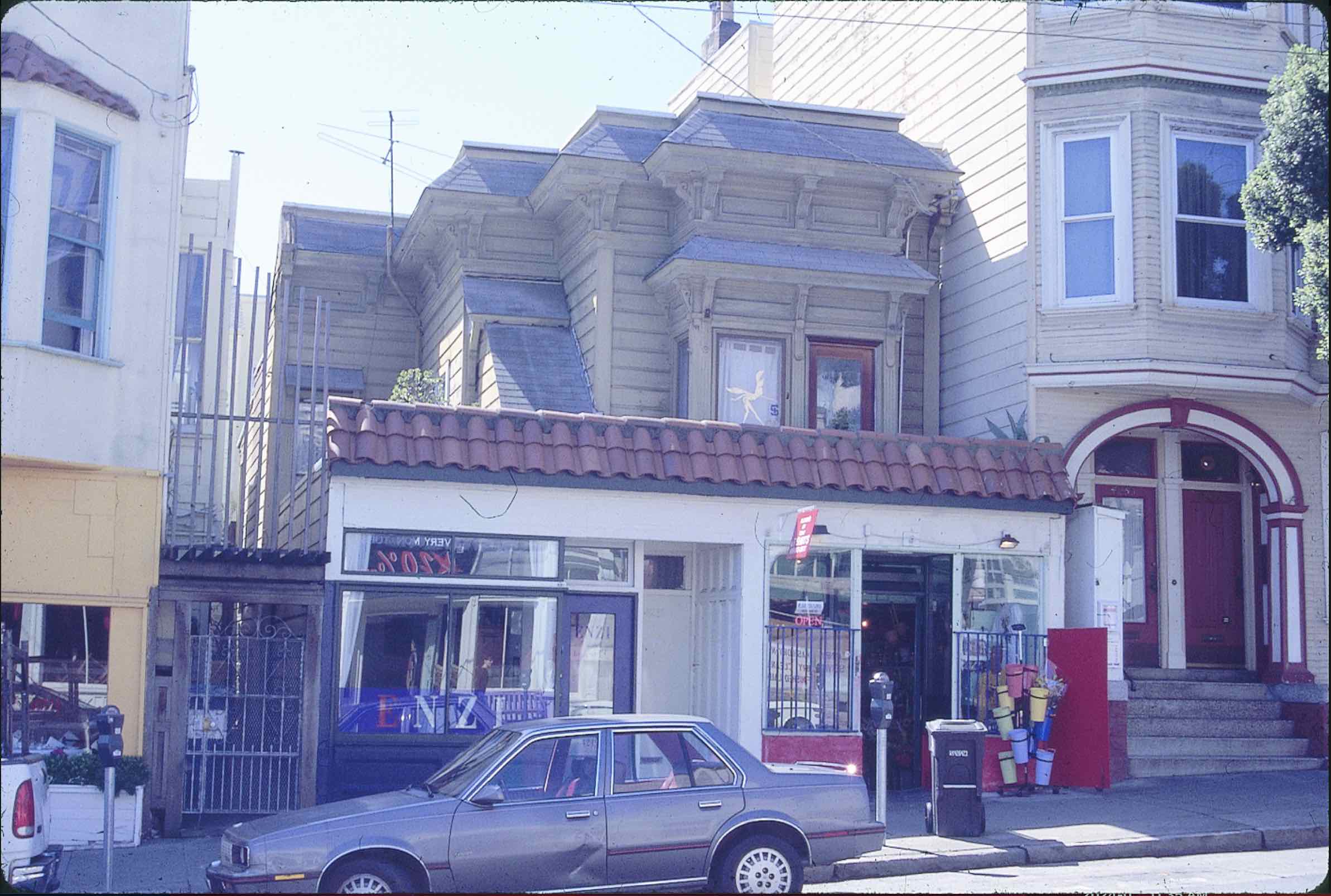
When Joseph Cangelosi became ill in the early 1930s, he worried about how his wife, Pearl, would support herself, so he turned the garage shed in front of their Victorian house into a dual storefront. One space he rented to a barber. In the other he established Oasis Liquors.
Pearl sold wine, beer, and candy there for decades. “It barely made money at all,” her granddaughter Yvonne remembered, “but it gave her something to do.”
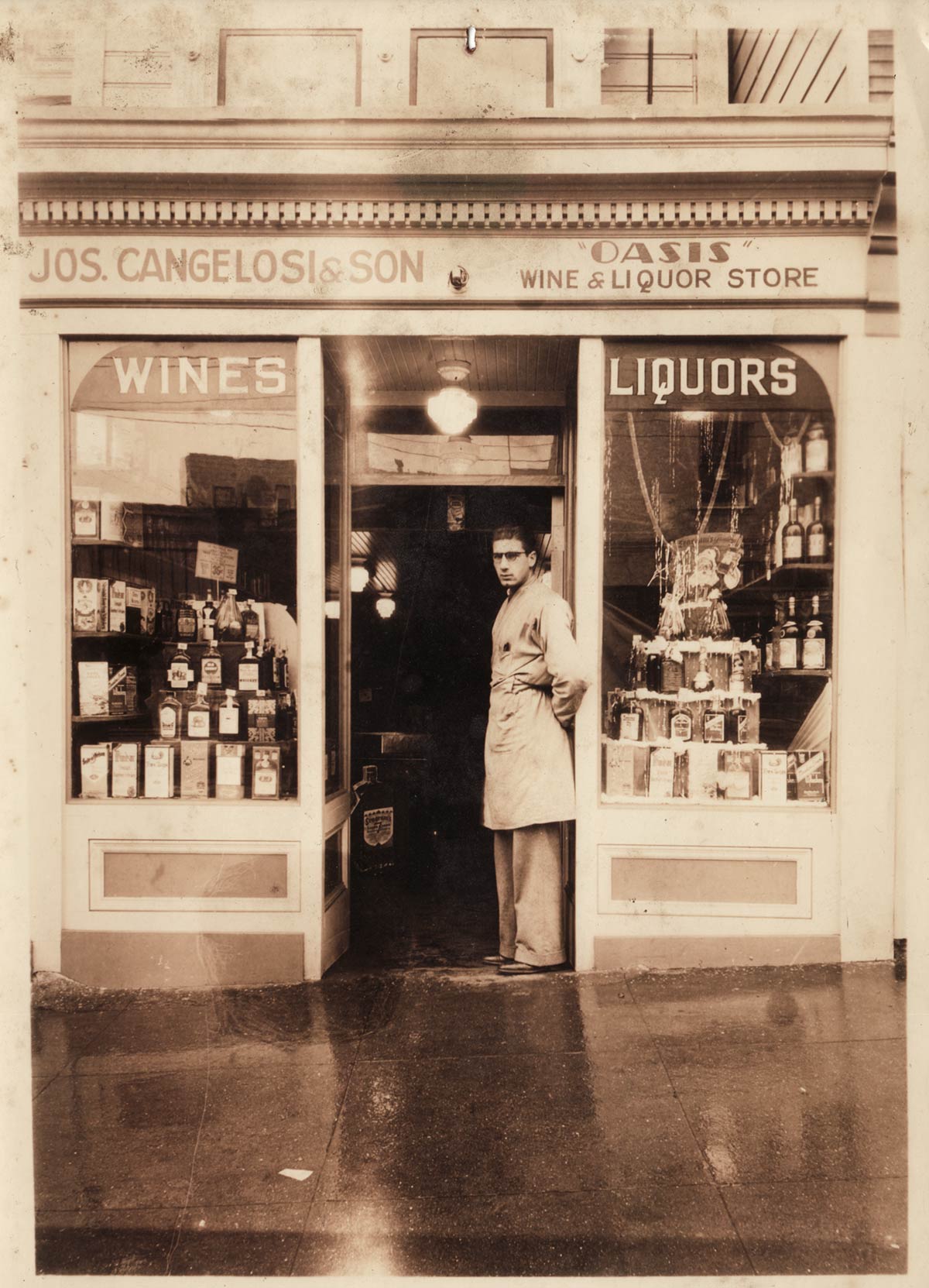
Their son, Vincent, was just 19 years old when his father died. The “lower-middle-class Eureka Valley rough boy” somehow won the heart of a Sunset District girl, Doris Markstrom. They married on Valentine’s Day in 1936. They had their first child, Robert “Bob” Joseph Cangelosi in 1938 and their daughter Yvonne in 1942.
The family lived behind and above the liquor store. A small backyard held a massive cherry tree for Bob and Yvonne to climb.
Bob: “We ran everywhere and only came home when the church bells rang at Most Holy Redeemer at noon for lunch and then again at five o’clock for dinner.”
Their cousins, the Johnsons, lived just a block away on 19th Street. Take a look at some footage after the double christening of Yvonne Cangelosi and Sharon Johnson at Holy Innocents Episcopal Church, even just to admire the clothes:
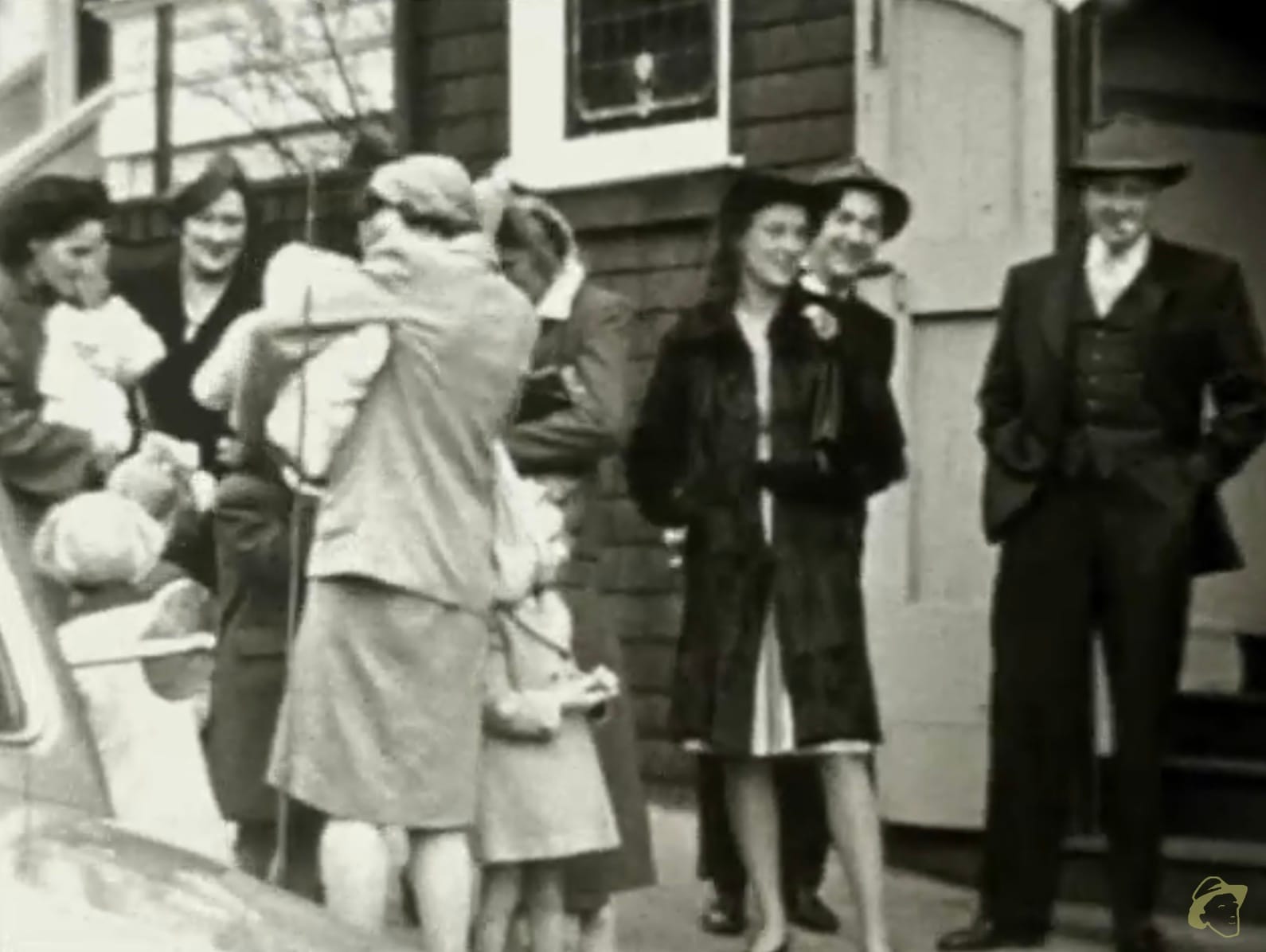
Bob used to play tackle football at Dolores Park and softball with his friend Willie Woo at Eureka Valley playground.
Occasionally boys from Noe Valley—“Carrying chains and boards with nails!”—would come over the hill to fight the Eureka Valley kids. The assigned meeting place for battle was second base of the playground’s softball field.
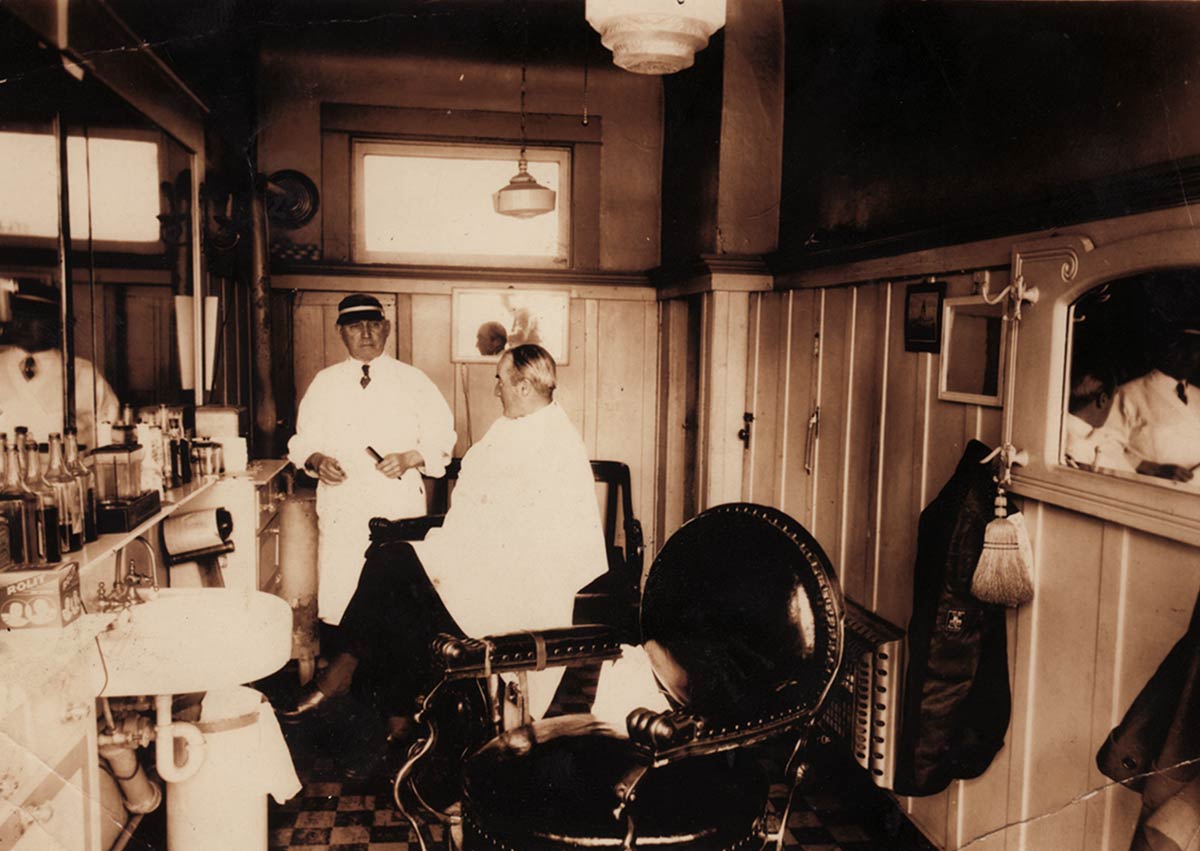
The neighborhood was notably racist then. Bob once saw a black kid step off a bus on Castro Street only to be immediately set upon by a gang of locals who chased him up the hill in the direction of 24th Street.
Eureka Valley transformed into the Castro in the 1970s. Almost all the old businesses faded away, including Oasis Liquors. After Pearl died, the family rented the space to a variety of businesses. It is currently occupied by a truffle and ice cream store.
When the Pride parades began in the 1970s, Yvonne and her cousin Sharon Johnson camped out on the roof of the storefront, drinking wine and toasting a new era. Some member or other of the family lived on the property until 2010, when it was finally sold.
Hyatt Rotating Again!
I hate to leave Eureka Valley, but this news is too important not to share. The restaurant on the top of the Hyatt Regency Embarcadero is being repaired to rotate once more!

2024 is turning out to be the best year ever.
Woody Beer and Coffee Fund
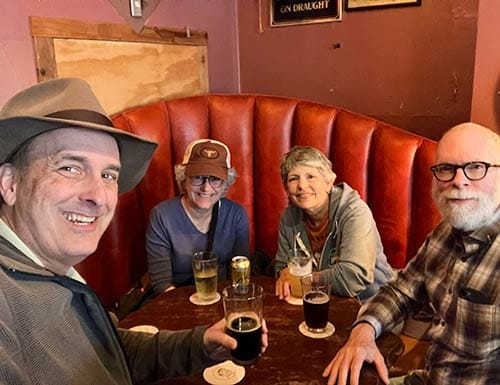
For 100 straight weeks I have sent out a San Francisco Story email. That, I think, deserves a toast. Let me know when you are free to do so. If you’d like to assist with a contribution to the Woody Beer and Coffee Fund, please feel empowered. 😄
Sources
“Eureka Valley,” San Francisco Examiner, September 25, 1895, pg. 14.
“Nine Girls Seeking Eureka Fiesta Throne,” San Francisco Examiner, August 30, 1914.
“Eureka Valley Acclaims Queen,” San Francisco Bulletin, September 16, 1914, pg. 7.
“Queen is Elected for Valley Carnival,” San Francisco Examiner, September 16, 1914, pg. 7.
“Eureka Valley in Gay Dress for Big Fete,” San Francisco Bulletin, September 24, 1914, pg. 4.
Anita Day Hubbard, “First Eureka Teacher Found Iris, Goats But No School,” San Francisco Bulletin, September 25. 1924, pg. 4

